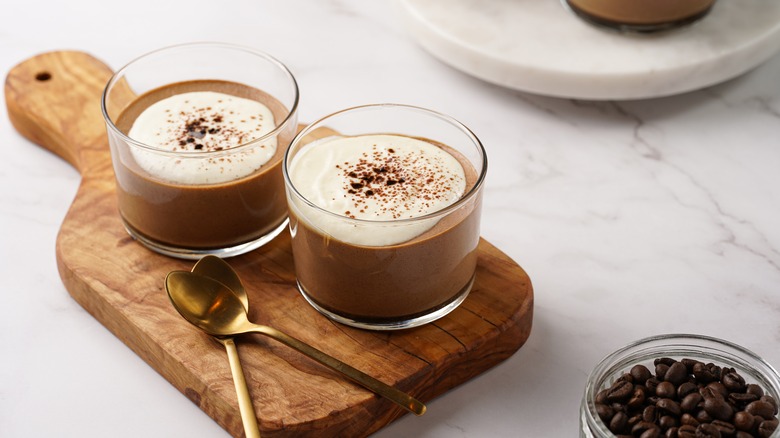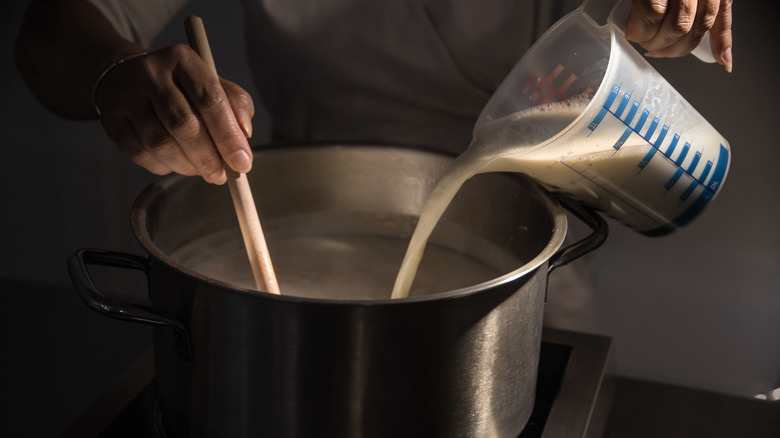Mousse Vs. Pudding: What's The Difference?
When you think of pudding, you usually imagine that it's found in a plastic cup next to an endearing peanut butter and jelly sandwich; for mousse, you picture an intricately layered cocoa cream served in a fancy cup at a wedding. These smooth, slightly gelatinous desserts seem to be identical dishes, namely due to their appearance and their similar ingredients. Both are more stable than whipped cream but less structured than custard.
However, aside from the context in which they're usually found, pudding and mousse have quite different textures and ingredients. For one, mousse is airy, while pudding is denser and richer. The lightness of mousse and the eggy custard texture of pudding can really be attributed to how these two desserts are made. Sure, both of these creamy dishes are made of some combination of cream and sugar, but there are more differences between the two than meets the eye.
One is cooked, while the other isn't
According to Food52, a basic mousse really only needs two components: an aerator and a base. The aerator is the key to making the mousse light and fluffy, and it's also what distinguishes a mousse from its creamy doppelgangers: pudding and custard. The aerator of the mousse is usually whipped egg whites or whipped cream, which makes up much of the volume of the mousse. Thus, mousse requires no cooking, just some simple folding, as seen in this Once Upon a Chef chocolate mousse. The base of a mousse is only the flavoring ingredient–it can be chocolate, fruit puree, or even pudding itself.
A pudding, on the other hand, has no aerator. Instead of air making up much of its volume, pudding is mostly made of milk thickened with some type of starch, per MasterClass. Pudding is also usually just made with milk or cream, sugar, and the thickening agent, which means that it comes together in a pan with some heat. Some puddings incorporate eggs to aid the thickening process, but most use cornstarch or flour.
Mousse is lighter due to the amount of air incorporated into the mixture, while custard is more filling and wobbly in appearance. Try Alton Brown's chocolate mousse, which follows the basic mousse-making principle with two simple ingredients. If you prefer a thicker, richer cream, make our classic banana pudding recipe using basic pantry items.

